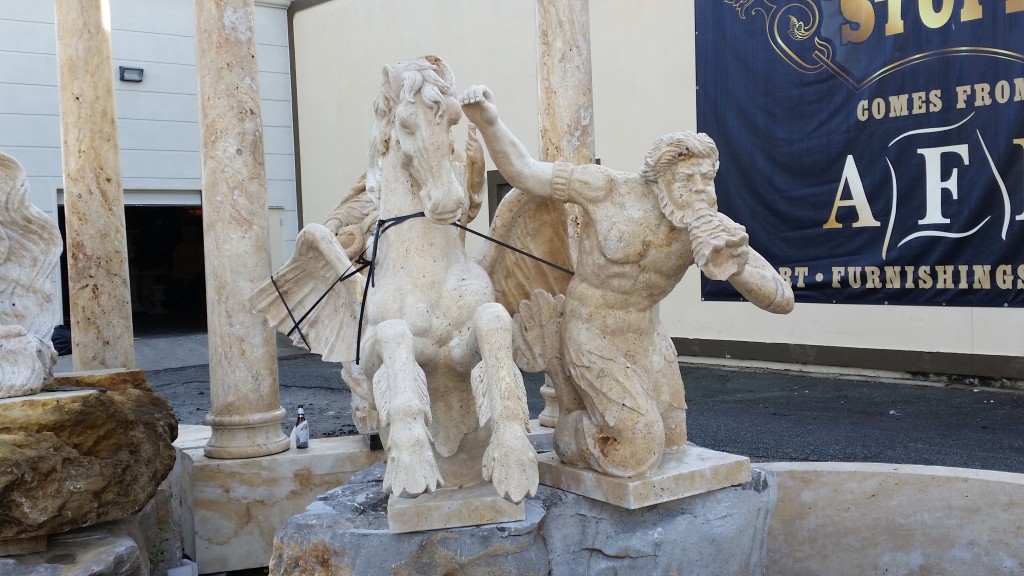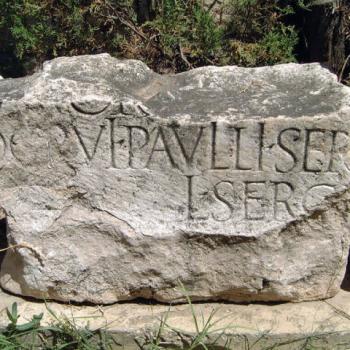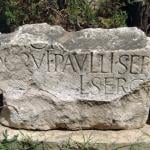Here is an excellent recent post by my friend Larry Hurtado which deserves a further hearing. He is not enamored of the ‘history revisionists’ and neither am I when it comes to early Christian history.
by larryhurtado
A recent article mounts a “full-on” challenge to the widely-accepted report of a Neronian pogrom against Christians in Rome in 64 AD, after the fire that destroyed a goodly part of Rome: Brent D. Shaw, “The Myth of the Neronian Persecution,” Journal of Roman Studies 105 (2015): 73-100. It’s a large and complex analysis and argument, and will justify more space than I can give it here. So I’ll simply comment briefly on a few matters that left me a bit puzzled.
The key and most specific witness to Nero’s pogrom against Christians is the Roman writer, Tacitus, in his extended description of the fire in Annals 15.38-44 (composed ca. 110-120 AD). This report has enjoyed widespread acceptance among historians, but Shaw claims “compelling” reasons to doubt that Nero used Christians as scapegoats for the fire. Essentially, Shaw goes at the question like a diligent defence attorney, seeking to question the prosecution’s case, and even posing an alternative account. He certainly shows that any judgment in the matter must involve weighing various factors and assessing probabilities, and that is one reason that his article is a worthwhile read. I don’t (at least not yet) find Shaw’s case “compelling,” however, largely because of his handling of relevant evidence.
Shaw’s basic claims are that Tacitus’ report reflects what he honestly thought was historical fact; but Tacitus was mistaken. Instead, Shaw urges, Nero probably did execute some people blamed for the fire, but there is no reason to think that he went after Christians in particular. So, why did Tacitus report otherwise? Here is Shaw’s explanation:
“. . . Tacitus had at his disposal, in either written or oral sources, what he believed to be credible and compelling grounds to accept the stories that linked the Christians, Nero, and the fire at Rome as elements of a true narrative. Parts came from written records about the fire, and oral recollections; others came from contemporary cognizance of imperial administrators about such an identifiable and threatening group, and still others were further contemporary sources that linked the Christians with Nero.” (p. 96)
This all seems a bit vague and hazy to me, however: Somehow, although Nero never went against Christians in connection with the fire, the story developed that he had done so, and Tacitus accepted it. Granted, Shaw’s focus is more on attacking the bases for the more traditional view, but his own proposal for how it came to expression influentially in Tacitus seems to me just a bit less than worked out adequately, and so less than persuasive.
Shaw’s efforts to set aside the body of material typically invoked in support of the traditional view likewise seem to me curious at points. For example, he cites Acts of the Apostles as a rather straightforward account of things when it seems to suit him (whereas a good many NT scholars would be more hesitant to use Acts quite so confidently), but then queries it when he must for his own case. In particular, Shaw takes as anachronistic the statement in Acts 11:26 that the term “Christians” was first applied to members of the Jesus-movement in Antioch. But Shaw’s reason seems to be the odd notion that Acts portrays here “The first use of the name Christianos as a mode of self-identifcation” (p. 88), whereas, surely, the Acts text refers to the first use of the term by outsiders. From this external usage, the term came to be used thereafter by Christians themselves (as reflected, e.g., in 1 Peter 4:16), but an earlier and originating usage by outsiders such as portrayed in Acts, perhaps even as early as the 50s, still seems to me entirely plausible.[1]
Also, Shaw curiously refers to the term “Christiani” (and the Greek, Christianoi) as connoting fictive sons/daughters of someone, whereas one more frequently sees analogies to the labels of various political parties (e.g., Herodiani, Sullani, Neroniani, Caesariani, et alia). In that light, the originating use of the term “Christiani/oi” by outsiders likely designated people as adherents or partisans of “Christ.”
Suetonius mentions Nero inflicting punishments on Christians (The Twelve Caesars: Nero 16), but doesn’t link this directly to the fire. So, Shaw points to this as working against the report in Tacitus. But each of these ancient writers had his own purposes and emphases, and neither felt obliged to back up the other. Can we so readily take the absence of confirming evidence in Suetonius as reason to doubt Tacitus’ account?
I think that Shaw exaggerates the nature of the ignorance that Pliny the Younger professed in his famous letter to Trajan (pp. 90-91), taking Pliny’s somewhat coy opening statements without noting their rhetorical purpose.[2] Actually, what Pliny seems unsure about is, more specifically, what to do with former Christians and with those who apostasized (obeying his commands to do so). Indeed, Pliny’s letter indicates that he knew of trials of Christians earlier than his own, and he certainly had no hesitation about how to treat those who refused to recant according to his demands: Execution or (in the case of Roman citizens) dispatching them to Rome for trial. Note also that Trajan’s response confirms the propriety of Pliny’s actions. This doesn’t necessarily mean that there was at that point a formalized Roman judicial policy, but it does mean that Christians as such weren’t really entirely new on the radar screens of Roman judicial authorities.
Shaw also questions traditional notions of the deaths of Paul and Peter. He grants that Paul was likely executed in Rome sometime in the 60s, but doubts that it was connected to Nero. As for Peter, Shaw opines that he likely died in his bed in Judaea (but see now Timothy Barnes’s recent essay).[3] One of the witnesses cited for the two apostles being executed in Rome is the account in 1 Clement 5, which is commonly taken as a letter sent from the church in Rome to the Corinthian church sometime ca. 95-97 AD. Shaw, however, refers to 1 Clement as “Pseudo-Clement” (pp. 84-85, a strange label, given that the text nowhere claims to be written by Clement, and so hardly is pseudonymous), and seems to lump it together with the other texts that, with considerably less validity, have been linked to Clement (2 Clement, and the later Clementine literature). But a good deal of work has been done on all these texts over a century or more (noting especially, J.B. Lightfoot’s classic work on the “Apostolic Fathers”), and the result more generally has been a differentiation between the confidence placed in 1 Clement (as a genuine letter from the Roman to the Corinthian church) on the one hand, and, on the other hand, any of the other texts. Shaw’s blithe dismissal of 1 Clement, therefore, though convenient (perhaps even necessary) for his case, seems to me to require more by way of justification.
But, even if I am not convinced by Shaw’s case, I think it is very much worth the attention of anyone seriously interested in questions about the situations of early Christians, and specifically their relationship with Roman authorities. I trust that his article will receive the further scholarly analysis that it deserves.
[1] Among recent discussions of the likely origins of the term, see David G. Horrell, “The Label χριστιανος: 1 Peter 4:16 and the Formation of Christian Identity,” Journal of Biblical Literature 126, no. 2 (2007): 361-81; Townsend Philippa, “Who Were the First Christians? Jews, Gentiles and the Christianoi,” in Heresy and Identity in Late Antiquity, ed. E. Iricinischi and H. M. Zellentin (Tübingen: Mohr Siebeck, 2008), 212-30. Similar phenomena are commonly pointed to, such as the positive adoption of the term “Mormon,” “Quaker,” and “Methodist,” from initially somewhat critical and outsider uses.
[2] Pliny’s letter and Trajan’s response are available in a number of publications, including: A New Eusebius: Documents Illustrative of the History of the Church to A.D. 337, ed. J. Stevenson (London: SPCK, 1974), 13-17.
[3] Timothy D. Barnes, “’Another Shall Gird Thee’: Probative Evidence for the Death of Peter,” in Peter in Early Christianity, eds. Helen K. Bond and Larry W. Hurtado (Grand Rapids: Eerdmans, 2015), 76-95. In the same volume, note also Peter Lampe’s large study, “Traces of Peter Veneration in Roman Archaeology,” 273-317.












